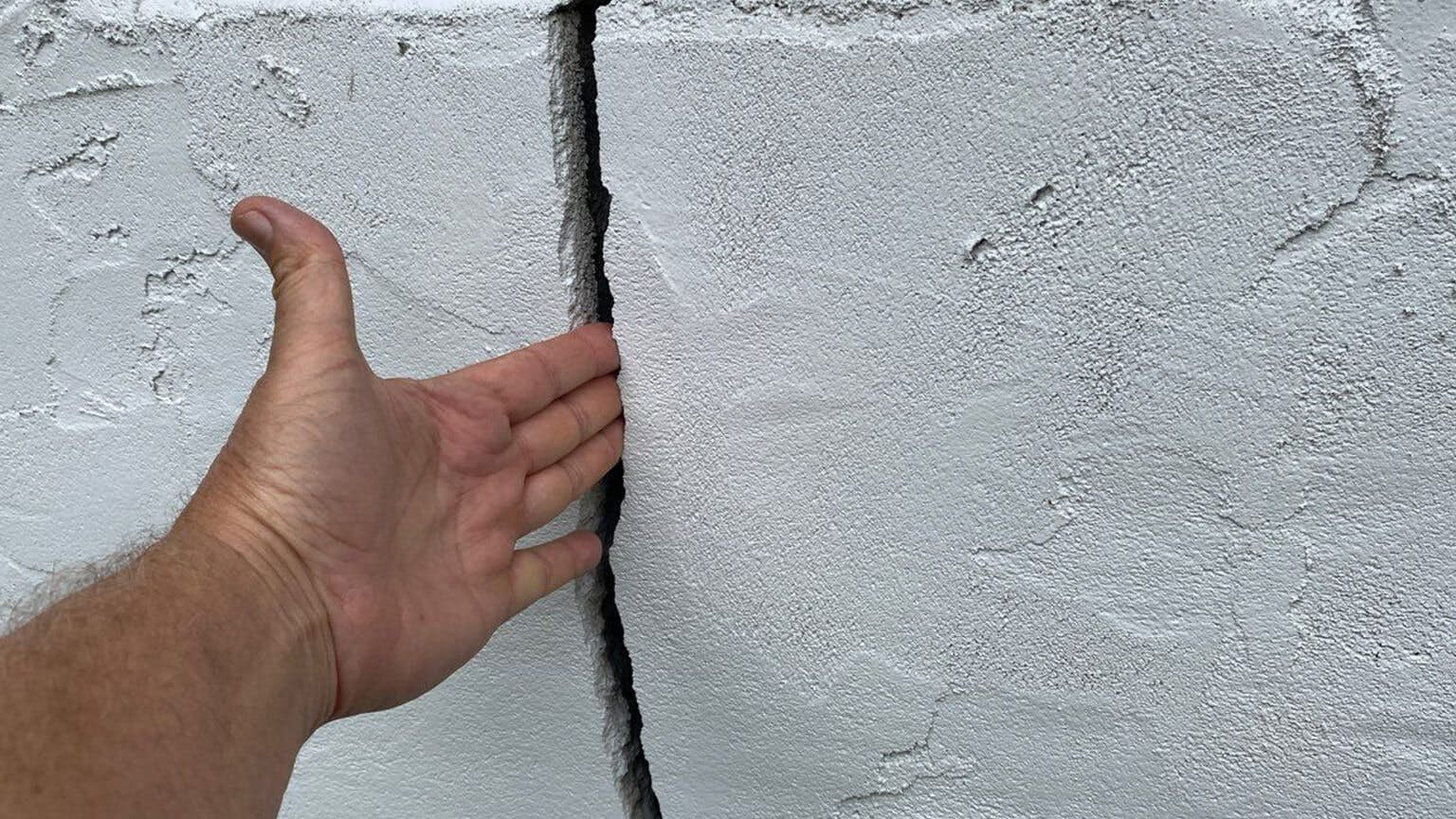Basement Problem Signs
Cracks in Basement Walls and Floors

At ’58 Foundations & Waterproofing, we're experts in identifying the early warning signs of foundation cracks, understanding their root causes, and recommending effective repair solutions, all backed with a warranty for your peace of mind.
Honest & Fair Pricing
Life of the Structure Warranty
Money Back Guarantee
Over 66 Years of Expertise



It’s not uncommon for many homes to exhibit cracks in their basement walls or floors. However, these cracks are indicative of underlying concerns with your foundation. Some cracks may emerge within the first year of a house’s construction due to concrete shrinkage. Others result from external pressure exerted on walls or floors. Further cracks may appear if your house settles unevenly into the underlying soil, causing the concrete to shift.
These cracks signify the potential for water infiltration and consequential damage. Recognizing the warning signs and knowing when to involve professionals for effective waterproofing can be the decisive factor between a minor fix and a major renovation.
Understanding the Causes of Cracks in Walls and Foundations
Various factors can lead to the formation of cracks in a building’s walls and foundation. Settling is a common cause, often due to the gradual adjustment of a structure over time. This settling may be more pronounced if the initial construction lacked proper supports or footings to bear the weight of the home. Settling often manifests as vertical or stair-stepped cracks along the exterior walls or corners.
Poor drainage is another culprit, arising when water collects and persists around the foundation. This can elevate ground saturation, applying pressure on exterior walls and causing cracks in materials like bricks, mortar, and concrete blocks. Additionally, it can result in wall bowing and foundation movement, potentially leading to horizontal cracks along basement walls.
Soil erosion, brought about by factors like rainfall washing away soil, can weaken the foundation’s support. Freeze-thaw cycles can also impact the soil beneath and around foundations, causing swelling during colder months and contraction during warmer periods, potentially creating gaps that contribute to cracking.
While these factors present various possibilities, one constant remains: age often correlates with the development of cracks in walls and foundations, as materials naturally deteriorate over time. Considering the age of your property is crucial when assessing cracks and planning necessary actions.
The Role of Age in Waterproofing Needs
The age of your home plays a significant role in the demand for waterproofing. Older homes are more susceptible to foundation cracks due to shifts and settling over time. Even seemingly stable foundations in older homes can experience deterioration, leading to vulnerable areas that can be infiltrated by water. Conversely, modern homes often incorporate newer, more weather-resistant materials that contribute to a sturdier structure.
Age, however, is not the sole consideration. Other factors, such as outdoor weather conditions, can exacerbate water-related damage and necessitate timely maintenance. Paying attention to these conditions is vital for safeguarding your property against further damage.
Signs of Water Issues
Irrespective of your home’s age or prevailing weather conditions, it’s essential to recognize signs indicating a need for waterproofing in your walls and basement. Key indicators include:
Water stains on drywall or concrete walls, pointing to water or excess moisture presence.
Efflorescence, a white powdery substance, on concrete surfaces, indicates excessive moisture in the concrete. Humidity levels exceeding 55, signaling the need for moisture control measures like vapor barriers and basement dehumidifiers.
Visible water should be addressed promptly to prevent damage and mold growth. Foundation cracks larger than ¼ inch may indicate severe structural issues requiring immediate attention.
Wall and floor cracks in a basement, according to the National Association of Home Builders, can signify foundation concerns such as soil settling or hydrostatic pressure, both demanding proper waterproofing to prevent water leakage.
In the realm of moisture and water concerns, procrastination only escalates the issue and amplifies repair costs over time.
Water Pressure on Basement Walls
A focal point now shifts to identifying signs of water pressure exerted on foundation walls. If any water presence is detected, immediate basement and wall waterproofing may be necessary. Delaying this action can lead to substantial repair expenses down the line.
Cracks in walls and foundation serve as the most apparent indications, potentially hinting at more significant water issues on the exterior of your house. Early detection and assessment of cracks are essential to avoid more costly consequences. Other indicators encompass loose wallpaper, peeling paint, or alterations in flooring surfaces such as cracked tiles and weakened wood floors. These signs may all point to water-related problems.
While not every crack or moisture instance implies impending disaster, addressing water pressure problems in your foundation is crucial to prevent worsening conditions over time. Timely intervention can avert more substantial repairs later. Professional evaluation of each issue is recommended to ensure accurate diagnosis and suitable action.
Structural Impact of Water Leaks
Structural damage stemming from water leaks within basement or foundation walls can lead to severe consequences. Eroded soil surrounding the foundation threatens its integrity, while internal moisture can foster mold and mildew growth, posing health risks and damaging materials like drywall. Even minor cracks, if left untreated, can expand due to water pressure and temperature fluctuations, potentially resulting in shifts and additional cracks in the foundation.
However, addressing minor cracks promptly can prevent further escalation. It’s important to note that the chosen repair method hinges on the size and location of the crack. Options such as epoxy injection systems and hydraulic cement patching offer cost-effective and efficient waterproofing solutions, potentially saving substantial sums in future repair costs.
Prompt Repairs for Long-Term Protection
In conclusion, the swift repair of leaking walls or basement cracks is pivotal to minimizing future expenses and preserving property value. Ignoring these issues can devalue your property and lead to more extensive problems. Recognizing the importance of preventing structural damage from water leaks and taking decisive action is the key to safeguarding your home against potential harm. By applying effective waterproofing techniques, like insulation, sealants, and patching, you can create a robust defense against water-related damage and ensure the longevity of your property.
With these measures in place, your home will be better equipped to withstand the challenges posed by water infiltration and maintain its structural integrity for years to come.
Struggling with Basement Issues?
Join over a million homeowners who've trusted our award-winning services. Request your free estimate and experience the difference.